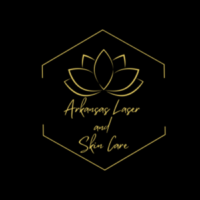LASER SKIN RESURFACING
LASER SKIN REVITALIZATION
LASER HAIR REMOVAL
IPL
INJECTABLES & DERMAL FILLERS
LASER TATTOO REMOVAL
truSculpt® iD & FLEX
Alma TED Hair Restoration
Q: What is Alma Ted?
A: Alma Ted is a revolutionary, non-invasive treatment. When used with a topical hair care formula, it promotes improved blood flow
to the scalp which results in thicker, stronger hair.
Q: How does it work?
A: Alma Ted is an ultrasound-based system that leverages acoustic
sound waves to promote improved blood flow to the treatment area.
Q: Who is a good candidate?
A: Individuals that are suffering from hair loss or that want to improve the overall thickness and appearance of their hair.
Q: How many treatments are required?
A: During your consultation, your provider will assess your hair to personalize a treatment plan for you. Best results are typically seen after 3 treatments, spaced 1 month apart. Although noticeable improvements may be seen after 2 weeks.
Q: How long does each treatment take?
A: This will vary based on your personalized treatment plan recommended by your provider. Average treatment time takes 20-25 minutes.
Q: Does it hurt?
A: The Alma Ted is a pain-free treatment. You can expect to feel a warm sensation from the device and a ringing sound through the course of the treatment, but there is no pain involved. No needles, no discomfort. No trauma to the scalp.
Q: What is the downtime?
A: No downtime
Q: What should you expect after your first treatment?
A: Alma Ted helps to improve the appearance of hair resulting in thicker, fuller-looking hair with increased shine and strength.
Secret RF
CO2 Laser
Q: What is the CO2 laser used for?
A: Because fractionated CO2 laser resurfacing targets lines, texture, tone, and brown spots, it’s used to globally rejuvenate the skin. It corrects color problems, eliminates fine lines and tightens the skin, giving the entire face a younger, refreshed appearance. Although it is most often used to treat the face, the CO2 laser can be used to improve neck, chest, arms, and hand skin. It is also frequently combined with surgical lifting procedures. If a facelift or neck lift is performed alone, the skin often doesn’t match the newer lifted appearance, making it look “done.” By rejuvenating the skin at the same time as surgery, the final result is a much more natural. The laser also beautifully softens and eliminates vertical lines around the mouth and tightens eyelid skin, which no surgical or injectable filler procedure can accomplish well.
Q: How does it work?
A: The fractionated CO2 laser works by focusing microscopic beams of light into the skin in a grid pattern. Because the laser targets water, a major component of the skin, it immediately vaporizes tissue when fired. Vaporized tissue removes brown spots and sun damage, and the resulting micro-wounds created by the laser stimulate a wound healing process that leads to collagen synthesis. Ultimately, this smoothens lines and tightens skin. Because there are small areas of “normal” skin between the micro wounds, healing is accelerated. Typically, pink new skin is visible 7-14 days after the procedure.
Q: Who is a good candidate?
A: Healthy patients with realistic expectations who are seeking total skin rejuvenation or treatment of scars from surgery or acne are excellent candidates for fractionated CO2 laser resurfacing. Patients with active inflammatory skin conditions may require treatment of these conditions before lasering, and those with very dark skin are not good candidates because of a risk of changing the skin’s native color.
Q: Your consultation?
A: During your evaluation, we will review your medical history and medications as well as evaluate your skin and discuss your expectations. Certain medical conditions and medications can increase procedure risks and recovery time. If you smoke, it is best to stop or reduce your smoking before treatment as smoking can slow the recovery process. We may also recommend prophylactic anti-viral medication to prevent any cold sore outbreaks after your procedure.
